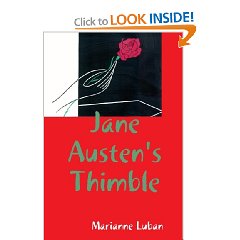Recently, a CT scan of the mummified remains of young King Tutankhamun showed that a slow, lingering death was possible due to a severe knee-cap injury which might have become infected. At any rate, the pharaoh appears to have died of some kind of trauma and even have gone into a coma leaving no one at Egypt's helm. That this situation was quickly remedied, however, seems to be indicated by a scene in KV62, the tomb of Tutankhamun. There Ay, already crowned with the khepresh, performs the "opening of the mouth" ceremony on a depiction of Tut as Osiris. This is an unprecedented portrayal of the successor as king in a royal tomb and, in my opinion, strongly suggests that Ay had become co-regent prior to the demise of Tutankhamun. Because, once sealed, it was not expected--or at leat hoped--that anyone would enter the king's tomb again, it is not likely that Ay had himself portrayed as the new ruler for propaganda purposes. He was merely shown performing the ritual in a capacity in which he had already been serving prior to the death of Tutankhamun and could no longer be depicted as a commoner sans diadem.
Since Tutankhamun ruled for about nine years, it stands to reason that his tomb had already begun to be excavated. However, the small KV62 hardly evidences years of work. That is why scholars of the past, even though they did not see a co-regency of the successor, postulated that Ay took the larger tomb of the young king for himself and had another excavated for Tutankhamun where he could even insert his own image. There is no reason why Tutankhamun, the ruler of the return to the orthodox religion, should not have opted for a burial in the West Valley where the last great pharaoh prior to the Atenist supremacy was interred--namely Amenhotep III. Therefore, WV23, the ultimate royal tomb of Ay, probably had originally been intended for Nebkheperure Tutankhamun. It seems probable, also, that both KV62 and WV23 had been painted by the same outline-artist at about the same time, the poorly executed images are so alike. However, in the case of WV23, this artist seems to have been a bit confused as to how he should decorate this tomb for Ay. It is difficult to know why WV23 ended up a kind of compromise between a royal tomb and that of a commoner, including elements not normally seen in a kingly burial. In the aftermath of his brief reign, Ay's images were simply hacked away by a totally unsentimental someone, leaving only one "ka figure" which was let alone on account of respect for royal ancestors fused into this ka [per Nicholas Reeves].
One item that was usually placed in a pharaoh's tomb time far in advance of his burial was his stone sarcophagus. In fact, that of Tutankhamun might already have stood in WV23--and had to be moved into the make-shift KV62. Was that why the lid of yellow granite had been broken beyond repair in a moving accident and why another lid of red granite, discarded because it had been cracked in half, was repaired with gypsum and pressed into service, painted yellow to match the color of the orginal sarcophagus? One cannot really know for certain, but various irregularities at the end of the reign of the unfortunate Tutankhamun certainly exist, not the least of which is the fact of his widow writing to the king of the Hittites asking for a prince to become her husband and ruler of Egypt beside her. Many have doubted that the widow was Queen Ankhesenamun but it is a plain fact that only the throne name of Tutankhamun fits to the "Nibhurryia" written in cuneiform as the name of the king of Egypt who had recently died. The bottom line is, Tutankhamun having no children, his wife Ankhesenamun, a king's daughter, had a legitimate claim to the throne and, insofar as we know, far better than that of the presumptuous Ay.
Sunday, November 29, 2009
Subscribe to:
Post Comments (Atom)








2 comments:
Perhaps this is why we have the single example of a ring showing Ankhesenamun's name with that of Ay, spurring long debate over whether Ankhesenamun ever married Ay. Perhaps early on in the co-regency, there was some confusion as to her status.
That's an interesting observation, but I tend to lean away from it. I don't think there can be any doubt that, while Tutankhamun was still breathing, Ankhesenamun would have been considered his wife. Whether or not she considered *herself* his co-regent in the circumstances is another matter. As for any willing alliance between her and Ay, my belief is that the letter to the king of the Hittites pretty much denies it. The ring may mean an eventual marriage--or an intended one that never occurred for some reason. Quite a mystery.
Post a Comment